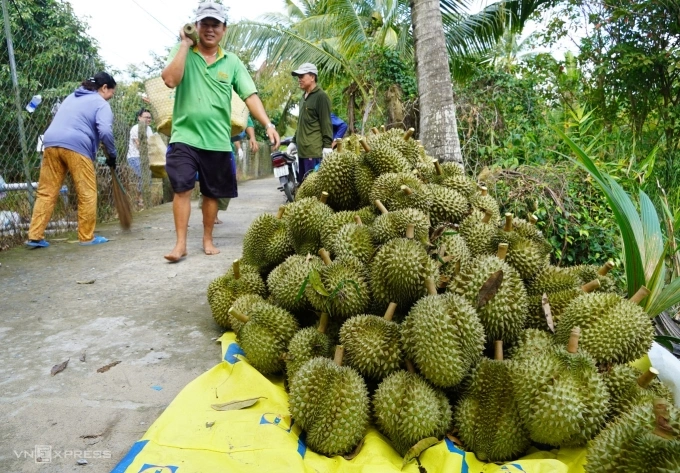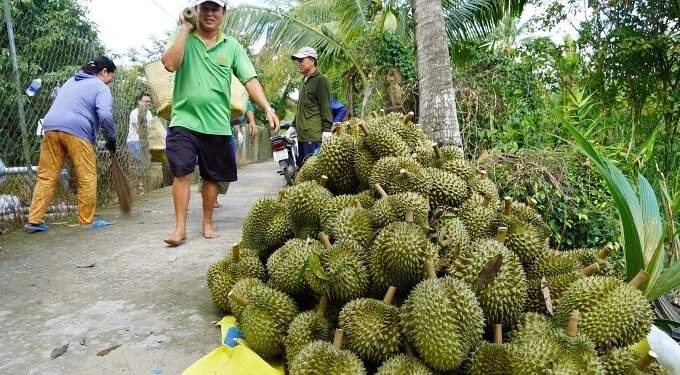However, following Chinese authorities’ tighter scrutiny of residues of banned substances, the drop had been much larger earlier in the year: 80%.
Vietnam’s total exports for the year-to-date have been worth $4 billion.
The U.S. ranked second with imports of $316 million following a 66% increase.
 |
|
Durians seen in the Mekong Delta province of Dong Thap. Photo by VnExpress/Hoang Nam |
Other markets, including Japan, the Netherlands, Taiwan, and Australia, saw growth of 13-40%, reflecting demand for Vietnamese fruits and vegetables.
Fruit and vegetable exports are recovering from a plunge earlier this year, driven by an improvement in safety control, Dang Phuc Nguyen, general secretary of the Vietnam Fruit and Vegetable Association, said.
The Ministry of Agriculture and Rural Development recently established a dedicated food safety control process for fresh durian exports all the way from the farm to the table.
If it is strictly implemented, durian, and other tropical fruits, would see a breakthrough in exports to China, a market of over 1.4 billion, Nguyen said.
But Chinese consumers are increasingly favoring processed fruits and vegetables for convenience, he added.
Nguyen said this is an opportunity that Vietnamese businesses need to quickly capitalize on to increase market share and stabilize output.
Vietnam’s trade deficit with China is high, and so, according to Nguyen Thi Thu Thuy, deputy director of the Trade and Investment Promotion Center, apart from tropical fruits, Vietnamese businesses should also prioritize other produce such as passion fruit, coconut, bird’s nest, and citrus fruits by establishing more sustainable supply chains in upcoming years.





